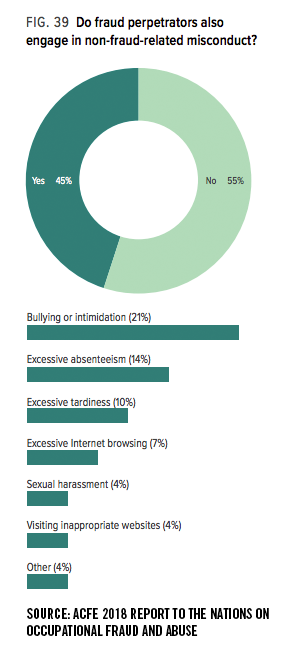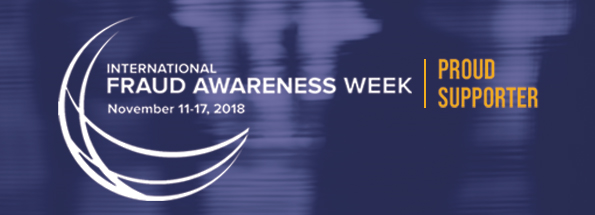2019 Fraud Week Series: How Technology is Helping in the Fight Against Fraud

This week is the 2019 International Fraud Awareness Week, an initiative of the Association of Certified Fraud Examiners (ACFE) to encourage business leaders and employees to prevent and minimize the impact of fraud in the workplace.
Occupational fraud, that is fraud committed by employees against employers, resulted in $7 billion in losses in 2017, according to the ACFE’s 2018 Report to the Nations. In studying nearly 3,000 incidents of fraud across 125 nations, they found cases ranging from computer theft to check tampering to corruption. Individual losses varied, with 55% of losses being $200,000 or less and 22% of cases being $1 million or more.
Through educational videos, workplace training, and awareness efforts, Fraud Awareness Week aims to arm workplaces with technologies and resources to prevent, identify, and effectively address these types of fraudulent activities.
A Snapshot of Occupational Fraud
Types of Fraud: Fraudulent activities fall into one of three categories: asset misappropriation; corruption; and financial statement fraud. Representing 89 percent of cases, asset misappropriation (e.g., altering checks or payments, misusing organizational resources) are the most common, with a median per-loss cost of $114,000, according to the report. Financial statement fraud, however, while more infrequent, led to much greater median losses at $800,000 per event.
Fraudster Profiles: Surprisingly, a full 96 percent of fraud perpetrators had no prior fraud conviction, according to the AFCE’s 2018 report. This underscores the fact that organizations need to have effective fraud detection methods in place to continuously protect the organization. This is particularly relevant considering fraudsters who were employed for more than five years stole twice as much, $200,000 vs $100,000 for newer employees.
Underlying Causes: Internal security measures are valuable lines of fraud defense for companies, yet nearly half of companies in the study cited “insufficient fraud controls” (30%) or “weak systems” (19%) as the underlying reason that fraud was made possible.
Impact: No organization is immune to occupational fraud. In fact, small businesses, defined as those with less than 100 employees, experienced a median loss of $200,000, compared to their larger counterparts of 100 or more employees, who experienced a median loss of just $114,000. It makes sense when you consider that small businesses have fewer resources to invest in internal controls and generally put more trust in their employees due to their inability to implement robust anti-fraud strategies.
Reporting Sources: Early detection is key to limiting losses associated with occupational fraud, and the ACFE study found that 40% of fraud detection came from tips. Of those tips, 53% were received internally and 32% from outside sources. Reporting hotlines go hand-in-hand with tips as an effective way to detect fraud. Of the companies analyzed in ACFE’s 2018 report, those with an accessible hotline detected fraud cases 46% of the time compared to a 30% success rate for companies without hotlines. The second highest fraud detection source at 15% was through an internal audit.
Using Technology to Detect Fraud
The key to catching fraudulent actions before real damage is done is having systems in place to ferret out anomalies and report suspicious activities early. This means being equipped with tools like automatic monitoring, artificial intelligence, and anomaly detection protocols. For instance, surprise audits and data monitoring are a powerful combination in reducing fraud loss. Though only 37% of the companies examined in the ACFE study used them, those that did got fraud cases under control in approximately half the time and reduced fraud losses by more than 50%.
In its latest infographic, How is Technology Being Used to Detect Fraud, the ACFE highlights some of the technologies that organizations are using to proactively identify suspicious activities. Here is a sampling:
- 26% of organizations currently use biometrics as part of their anti-fraud programs, and another 16% expect to deploy biometrics over the next two years.
- Purchasing is the risk area where organizations most commonly use data analytics (41%) to monitor for potential fraud.
- Nearly two-thirds of organizations currently use exception reporting or anomaly detection techniques in their fraud-related initiatives.
View the ACFE Infographic at fraudweek.com
To learn more ways to help your organization combat fraud, continue to look for our Fraud Week content and visit the ACFE Resources page.





